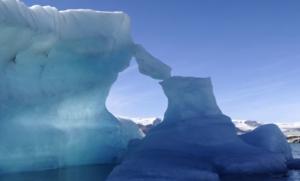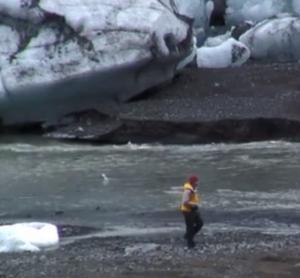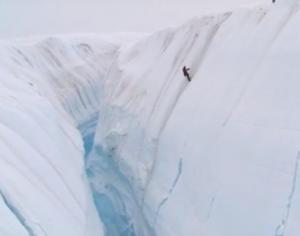Earth Science Movie: Chasing Ice
Earth Science Movie: Chasing Ice
After I teach a section on glaciers and glacier landforms, I show the documentary, "Chasing Ice." "Chasing Ice" is a fantastic video, full of imagery and story. It documents James Balog and his voyage to capture glaciers in their essene. I pause the move a bunch throughout, to discuss much of the vocabulary given during the glacier unit: till, outwash plain, moraines, rock fall, alpine glacier, continental glacier etc...

"Chasing Ice" does have a political undertone, which can be a little dangerous in my school where most of my students come from very politically conservative homes, which is fine. I pause the video multiple times to discuss the science found throughout. There isn't any bad science in the video. If you and your students are liberal in nature you will definitely have a good time viewing this movie. If you are conservative in nature you may be the type to debate the science. I do both. My goal is to get students thinking about how science is correctly done and the evidence presented in this video that many glaciers are shrinking.

James Balog is a geomorphologist turned nature photographer. He knows how to set up some great shots. His photos are amazing. James and his group visit 4 different glaciers and set up multiple cameras hoping to capture glacial changes. The movie shows the harsh extremes in which glaciers are found. "Chasing Ice" does a fantastic job going behind the scenes demonstrating that science is more than just computer modeling and working in a lab. He gets out there and documents these changes in ice. His crew sets up cameras around the world taking pictures hourly of the glaciers for three years. He then creates amazing time lapse footage of the changes that glaciers go through. This is very important for students to see that glacial erosion is fairly quick and is easy to notice, compared to other erosional types. It is also fun to see how glaciers retreat and advance throughout the video. His footage brings some compelling arguments and evidence that many glaciers are retreating and getting smaller throughout the word.

Part of the documentary discusses how scientists use glacier core samples to discover ancient atmosphere compositions. It discusses how glaciers are formed and demonstrates some of the scientific data that has been gathered about climate over quite a few years. Part of the video discusses how carbon from the atmosphere can land on glaciers and then help melt them.

One of my favorite parts is when Jim and his crew climb down some crevasses to take pictures. The scenery is fantastic.

All but one part of the video maintains appropriate language. There is a section when Jim Balog is frustrated that a camera didn't function and uses the "F" word. During this footage, I just mute it and talk about how frustrating this situation would be; all the hours and time only to have your equipment fail. Which brings me to another pretty neat part of the video: Another camera is damaged by a rock fall and another by animals. This is good because I discuss the harsh difficulty in getting scientific data in some situations and that too would be very frustrating. The rockfall is cool because this lesson on glaciers is during my unit on erosion and rockfalls are part of that unit.

I highly recommend this glacier documentary video or at least parts of it to be watched with your students when teaching glaciers, at least at the high school level. Below is a youtube video version of the "Chasing Ice" documentary with French subtitles. It is probably pirated and will eventually be deleted, but you can start there if it is available. I actually bought the movie through Google Play so that I can show my students without the video ever being flagged for copyright.









